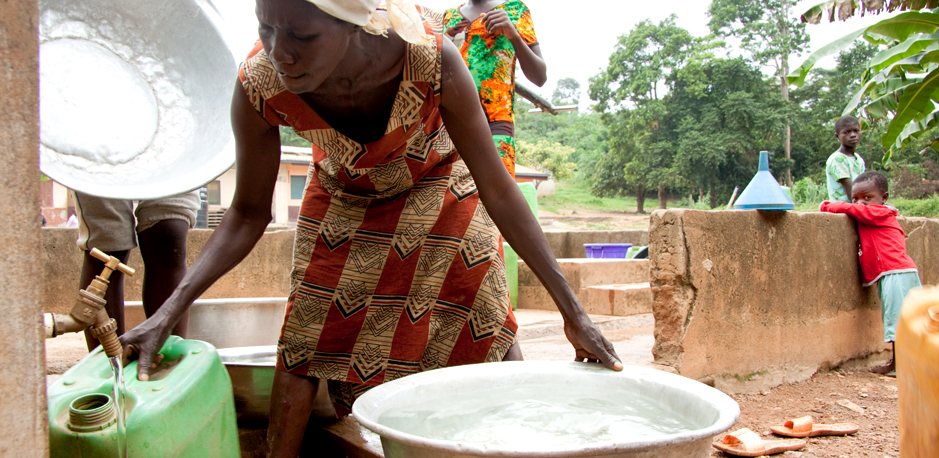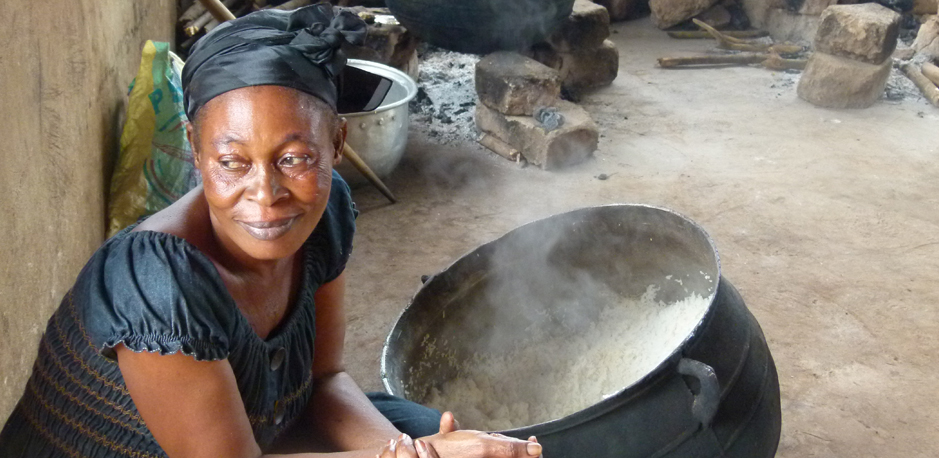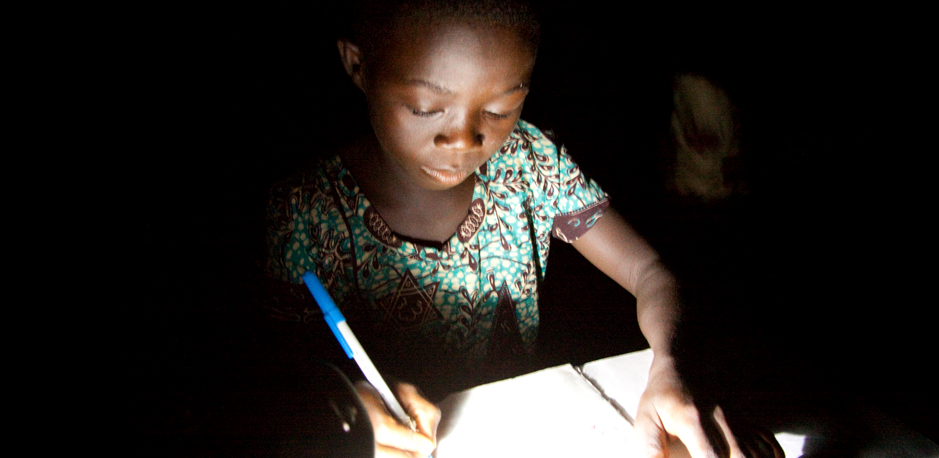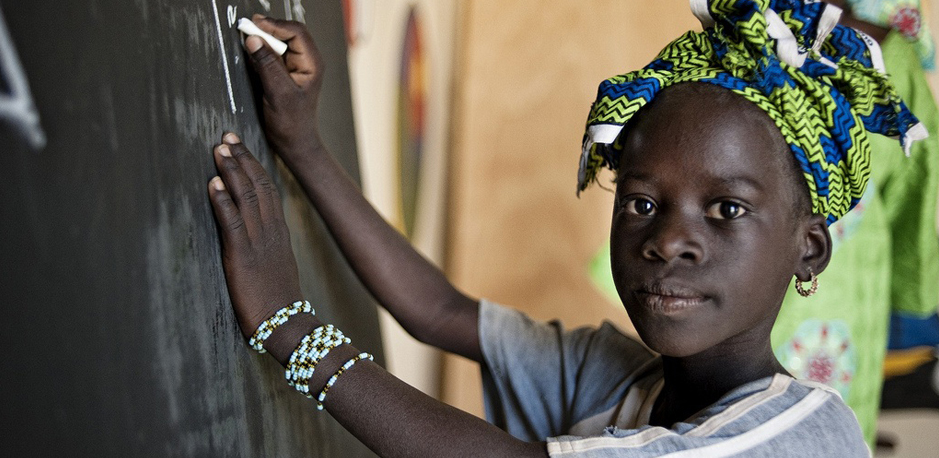Millennium Villages Project
Since 2005, the Earth Institute’s Millennium Villages project (MVP) has been striving to help nearly 400,000 people across 10 African countries to meet the MDGs. It is widely recognized that infrastructure is an essential building block for countries to meet their larger development goals and the Sustainable Engineering Lab has been influential in shaping the MVP’s evolution through a set of innovative water and energy solutions.
Infrastructure within the Millennium Villages Project
The scarcity and generally poor condition of infrastructure in the Millennium Villages at the start of this project in 2005/6 was representative of rural Sub-Saharan Africa. The broad objective of the MVP infrastructure program is to reduce by half the number of people without access to modern energy, transportation, communication services and water and sanitation by 2015. Through a number of collaborative efforts with local and international partners, the Sustainable Engineering Lab provided the technical guidance to achieve these objectives.
View a summary of infrastructure related activities.
The most innovative and impactful interventions were in the water and energy sectors which are presented in greater detail below:
Project Type: ICT4D
Location: Sub-Saharan Africa
Partners:
Millennium Promise
Links:
millenniumvillages.org
Menu:
Infrastructure
Piped Water Networks
Improved Cookstoves
Solar Lighting
Literacy Assessments
Papers
Related Blog Entries
Photo Courtesy of MVP
Through a unique partnership with local water authorities and JM Eagle, a private US-based PVC pipe manufacturer, the MVP was able to construct more than 335 miles of piped water supply networks to provide access to improved water to more than 30,000 people in Senegal, Mali, Ghana, Uganda, Malawi, Tanzania and Rwanda. The majority of the piped networks were extensions to existing government networks that were in need of expansion. The PVC piping was provided as an in-kind donation, the technical designs were elaborated by the local technical authorities and the installation works were carried out by the MVP’s implementing partners. This unique collaboration was beneficial for all of the partners involved. Local water authorities retained control of the technical aspects of the project while their communities benefitted from increased access to improved water at a lower cost than would have been possible without the partnership; the MVP limited its design and construction costs by leveraging technical expertise of the local water authorities and by dovetailing with existing government networks that already had the pumping and storage infrastructure in place and simply lacked the funds to pay for the network extensions; the PVC manufacturer benefitted by knowing that its contribution would be more sustainable given that it was integrated directly into the government infrastructure development plans rather than being a stand-alone solution as is often the case.
The first collaborative effort took place in Senegal during 2007/8. This project benefitted 13,500 people through more than 100 kilometers of pipe and 85 public taps and effectively brought water to within less than the MDG minimum standard of 1 kilometer. As of 2008, more than 80% of the households were within 400 meters of an improved water point. For more details related to this first piped water installation effort in Senegal, please click on the link below (link to the Word doc I am sending to you as well).
Photo Courtesy of MVP
The Sustainable Engineering Lab worked for several years within the Millennium Villages on issues related to household energy consumption. Initial works focused on the complexities of field testing improved cookstoves and measuring differences in fuel wood consumption and household energy expenditures for various types of cookstoves. It is typically assumed that any improved cookstove will reduce the consumption of fuel wood and its associated health impacts, but this is not necessarily true, especially with the locally manufactured, artisanal cookstoves. Careful testing is required to ensure that users will see energy savings and health benefits. This is an issue which is relevant across Sub-Saharan Africa.
Our work has resulted in several peer-reviewed journal articles in the sustainable energy field. Perhaps the most interesting outcome is that if done correctly, investments in improved cookstoves can lead to a decrease in fuel wood consumption and a resultant decrease in household expenditures on energy. These savings can be put to other productive use by the households. Nevertheless, fuel savings is not the only factor in adoption of improved cookstove technology. Many other challenges of matching stove technologies to user preferences arise and improved cookstoves still struggle to find a serious foothold in the Sub-Saharan African context.
Photo Courtesy of MVP
Beyond energy for cooking and heating, households in the rural areas of the Millennium Villages typically do not have access to grid electricity and so they rely upon kerosene and other expensive and unclean forms of energy for lighting. However, lanterns that use light-emitting diodes (LEDs) powered by batteries, which are in turn charged by grid electricity or small solar panels, have emerged as a cost-competitive alternative to kerosene and other fuel-based lighting technologies, offering brighter light for longer duration at equal or lower cost over time. The Sustainable Engineering Lab spent several years working within the Millennium Villages to assess the technical and commercial potential of large-scale adoption of these LED lanterns. Innovative financing programs were established in several countries and the results suggest that market based models of LED lighting technology dissemination has the potential to be replicated and scaled up in other off-grid regions of developing countries. View one such example in Malawi.
Photo Courtesy of MVP
Having students in schools is not enough; assessing the quality of education they are getting and intervening when necessary is key to improving education. The Literacy Assessment projects combine low-cost tools for literacy and numeracy assessment with digital data collection and visualization to provide immediate feedback about students’ education quality to their parents, community members, and school officials.
Papers
How Information and Communications Technology can Accelerate Action on the Sustainable Development Goals
Testing institutional biomass cookstoves in rural Kenyan schools for the Millennium Villages Project
Costing for national electricity interventions to increase access to energy, health services, and education
An overview and assessment of the Millennium Village project energy and infrastructure sector after five years






